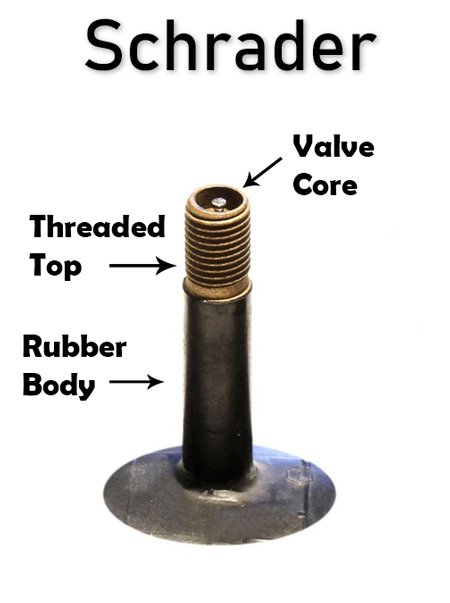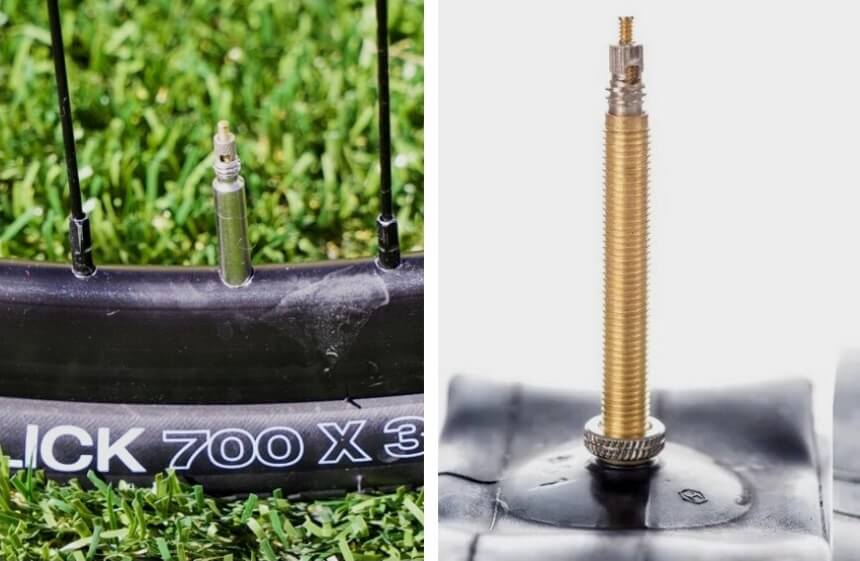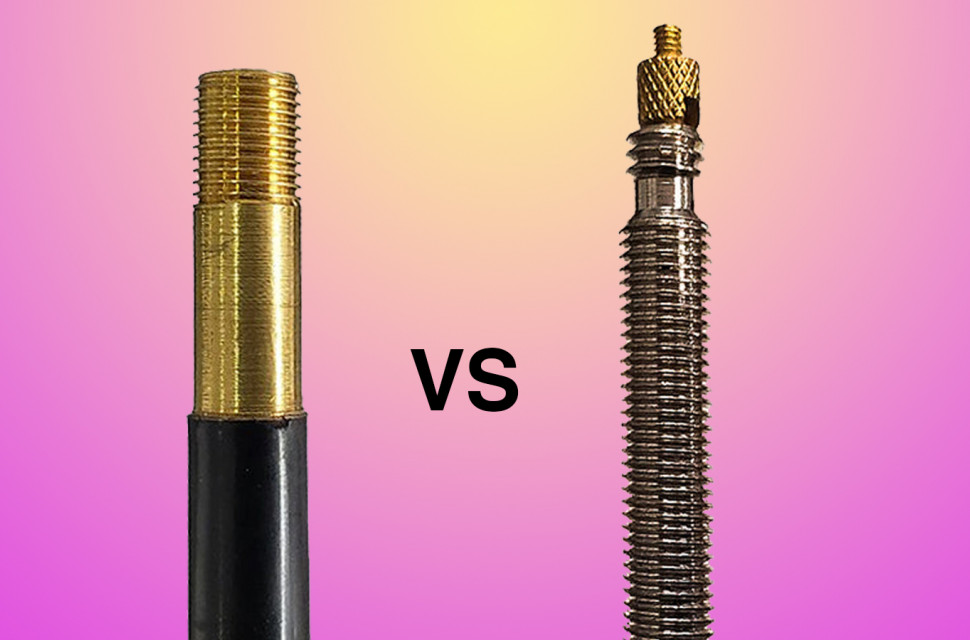Understanding the Basics of Tire Valves
Tire valves are a crucial component of any vehicle, playing a vital role in maintaining the optimal air pressure required for safe and efficient operation. When it comes to choosing the right valve type, two options stand out: Presta and Schrader. While both types have their own strengths and weaknesses, understanding the differences between them is essential for making an informed decision. In this article, we’ll delve into the world of tire valves, exploring the characteristics, benefits, and applications of Presta and Schrader valves, and provide guidance on how to choose the right one for your needs.
The Presta valve, also known as the French valve, is a popular choice among road bike enthusiasts and high-performance vehicle owners. Its slender design and lightweight construction make it an ideal option for those seeking to minimize weight and maximize performance. On the other hand, the Schrader valve is widely used on mountain bikes and everyday vehicles, thanks to its ease of use, durability, and compatibility with most tire types.
When considering the Presta vs Schrader valves debate, it’s essential to think about your specific needs and preferences. Are you a road bike enthusiast looking for a high-performance valve, or a casual rider seeking a reliable and easy-to-use option? By understanding the unique characteristics and benefits of each valve type, you’ll be better equipped to make an informed decision that meets your requirements.
In the following sections, we’ll take a closer look at the design, functionality, and benefits of Presta and Schrader valves, and explore the key differences between them. We’ll also examine real-world examples of each valve type in action, and provide guidance on how to choose the right one for your needs.
Presta Valves: The Preferred Choice for Road Bikes and High-Performance Vehicles
Presta valves are a popular choice among road bike enthusiasts and high-performance vehicle owners due to their unique design and functionality. Unlike Schrader valves, Presta valves have a narrower diameter and a longer stem, making them ideal for high-pressure applications. This design allows for a more precise control over air pressure, which is essential for achieving optimal performance and efficiency.
One of the key benefits of Presta valves is their lighter weight, which makes them an attractive option for road bike enthusiasts seeking to minimize weight and maximize performance. Additionally, Presta valves are designed to operate at higher pressures than Schrader valves, making them well-suited for high-performance vehicles that require precise control over air pressure.
Another advantage of Presta valves is their ease of use. While they may require a bit more effort to inflate and deflate, the process is relatively straightforward and can be mastered with a bit of practice. Furthermore, Presta valves are widely available and can be easily sourced from most bike shops and online retailers.
In the context of the Presta vs Schrader valves debate, it’s worth noting that Presta valves are often preferred by professional cyclists and high-performance vehicle owners due to their precision and reliability. However, it’s essential to consider your specific needs and preferences before making a decision. If you’re a casual rider or don’t require the high-pressure capabilities of Presta valves, Schrader valves may be a more suitable option.
Ultimately, the choice between Presta and Schrader valves depends on your specific requirements and preferences. By understanding the unique characteristics and benefits of each valve type, you can make an informed decision that meets your needs and enhances your riding experience.
Schrader Valves: The Standard Choice for Mountain Bikes and Everyday Vehicles
Schrader valves are a widely used and well-established type of tire valve, commonly found on mountain bikes and everyday vehicles. Unlike Presta valves, Schrader valves have a larger diameter and a shorter stem, making them easier to use and more compatible with a wider range of tire types.
One of the key benefits of Schrader valves is their ease of use. They are often preferred by casual riders and everyday vehicle owners due to their simplicity and convenience. Schrader valves are also more durable and less prone to damage than Presta valves, making them a great option for riders who don’t require the high-pressure capabilities of Presta valves.
Schrader valves are also widely available and can be easily sourced from most bike shops and online retailers. They are often less expensive than Presta valves, making them a more affordable option for riders on a budget. Additionally, Schrader valves are compatible with a wide range of tire types, including mountain bike tires, road bike tires, and even some high-performance vehicle tires.
In the context of the Presta vs Schrader valves debate, it’s worth noting that Schrader valves are often preferred by mountain bike enthusiasts and everyday vehicle owners due to their ease of use and durability. However, it’s essential to consider your specific needs and preferences before making a decision. If you’re a road bike enthusiast or require the high-pressure capabilities of Presta valves, Schrader valves may not be the best option.
Ultimately, the choice between Presta and Schrader valves depends on your specific requirements and preferences. By understanding the unique characteristics and benefits of each valve type, you can make an informed decision that meets your needs and enhances your riding experience.
Key Differences: Presta vs Schrader Valves
When it comes to choosing between Presta and Schrader valves, there are several key differences to consider. One of the main differences is the design of the valve itself. Presta valves have a narrower diameter and a longer stem, making them more suitable for high-pressure applications. Schrader valves, on the other hand, have a larger diameter and a shorter stem, making them easier to use and more compatible with a wider range of tire types.
Another key difference is the functionality of the valve. Presta valves require a specific type of pump or adapter to inflate, whereas Schrader valves can be inflated with a standard air compressor or pump. This makes Schrader valves more convenient for everyday use, but may limit their compatibility with certain types of pumps or adapters.
In terms of performance, Presta valves are generally considered to be more precise and reliable than Schrader valves. This is due to their more complex design, which allows for more precise control over air pressure. However, this also makes them more prone to damage and requires more maintenance than Schrader valves.
Ultimately, the choice between Presta and Schrader valves depends on your specific needs and preferences. If you’re a road bike enthusiast or require the high-pressure capabilities of Presta valves, they may be the better choice. However, if you’re a casual rider or prefer the ease of use and compatibility of Schrader valves, they may be the better option.
It’s also worth noting that some riders may prefer to use a combination of both Presta and Schrader valves, depending on their specific needs and preferences. For example, a road bike enthusiast may use Presta valves on their high-performance bike, but use Schrader valves on their everyday commuter bike.
How to Choose the Right Valve Type for Your Needs
Choosing the right valve type for your bike or vehicle can be a daunting task, especially with the numerous options available in the market. However, by considering a few key factors, you can make an informed decision that meets your specific needs and preferences.
First and foremost, consider the type of bike or vehicle you own. If you’re a road bike enthusiast, Presta valves may be the better choice due to their lighter weight and higher pressure capacity. On the other hand, if you own a mountain bike or an everyday vehicle, Schrader valves may be more suitable due to their ease of use and compatibility with most tire types.
Another important factor to consider is your riding style. If you’re an aggressive rider who requires precise control over air pressure, Presta valves may be the better choice. However, if you’re a casual rider who prioritizes ease of use and convenience, Schrader valves may be more suitable.
Personal preference also plays a significant role in choosing the right valve type. If you’re comfortable with the idea of using a specific type of pump or adapter, Presta valves may be the better choice. However, if you prefer the simplicity and convenience of a standard air compressor or pump, Schrader valves may be more suitable.
Ultimately, the choice between Presta and Schrader valves depends on your specific needs and preferences. By considering the factors mentioned above, you can make an informed decision that meets your requirements and enhances your riding experience.
It’s also worth noting that some riders may prefer to use a combination of both Presta and Schrader valves, depending on their specific needs and preferences. For example, a road bike enthusiast may use Presta valves on their high-performance bike, but use Schrader valves on their everyday commuter bike.
Real-World Examples: Presta and Schrader Valves in Action
To illustrate the differences between Presta and Schrader valves, let’s take a look at some real-world examples. One satisfied customer, a road bike enthusiast, reported that they were able to achieve a significant improvement in performance after switching to Presta valves. “I was blown away by the difference in handling and responsiveness,” they said. “The Presta valves allowed me to maintain a higher pressure, which made a huge difference in my ride quality.”
On the other hand, a mountain bike enthusiast reported that they preferred Schrader valves due to their ease of use and durability. “I’ve had my Schrader valves for years and they’ve never given me any trouble,” they said. “I’ve tried Presta valves before, but I found them to be too finicky and prone to damage.”
Another example is a high-performance vehicle owner who reported that they were able to achieve a significant improvement in fuel efficiency after switching to Presta valves. “I was amazed at how much of a difference the Presta valves made,” they said. “I was able to maintain a higher pressure, which improved my fuel efficiency and overall performance.”
These examples illustrate the different benefits and drawbacks of Presta and Schrader valves in real-world scenarios. By considering the specific needs and preferences of each rider or vehicle owner, it’s possible to make an informed decision about which valve type is right for them.
In addition to these examples, there are many product reviews and testimonials available online that can provide valuable insights into the performance and reliability of Presta and Schrader valves. By doing some research and reading reviews from other customers, it’s possible to get a better sense of which valve type is right for your specific needs.
Conversion and Compatibility: What You Need to Know
When it comes to converting between Presta and Schrader valves, there are several things to consider. One of the most important things to keep in mind is compatibility. Presta valves are not compatible with Schrader valve stems, and vice versa. This means that if you want to convert from one type of valve to the other, you will need to replace the valve stem as well.
Another thing to consider is the type of tire you are using. Some tires are designed to work with both Presta and Schrader valves, while others are specific to one type of valve. Make sure to check the specifications of your tire to ensure that it is compatible with the type of valve you are using.
In addition to compatibility, there are also some potential problems to watch out for when converting between Presta and Schrader valves. One of the most common problems is air leakage. This can occur if the valve is not properly seated or if the tire is not properly inflated. To avoid this problem, make sure to follow the manufacturer’s instructions for converting between valve types.
Finally, it’s worth noting that some riders may prefer to use a valve adapter to convert between Presta and Schrader valves. These adapters can be purchased at most bike shops or online retailers and can be a convenient solution for riders who need to use both types of valves.
Overall, converting between Presta and Schrader valves can be a relatively straightforward process, but it’s essential to consider compatibility and potential problems to ensure a smooth transition. By following the manufacturer’s instructions and taking the necessary precautions, you can ensure that your bike is running smoothly and efficiently.
Conclusion: Making an Informed Decision
In conclusion, choosing the right tire valve type for your bike or vehicle is a crucial decision that can impact your riding experience and overall performance. By understanding the differences between Presta and Schrader valves, including their design, functionality, and benefits, you can make an informed decision that meets your specific needs and preferences.
Whether you’re a road bike enthusiast, a mountain bike rider, or an everyday vehicle owner, it’s essential to consider the unique characteristics and benefits of each valve type. By doing so, you can ensure that your bike or vehicle is running smoothly and efficiently, and that you’re getting the most out of your riding experience.
Remember, the key to making an informed decision is to consider your specific needs and preferences, including your bike type, riding style, and personal preference. By taking the time to research and understand the differences between Presta and Schrader valves, you can make a decision that will enhance your riding experience and provide you with the confidence to take on any road or trail.
Ultimately, the choice between Presta and Schrader valves is a personal one, and what works for one rider may not work for another. By providing you with the information and insights you need to make an informed decision, we hope to have empowered you to choose the right valve type for your needs and preferences.







